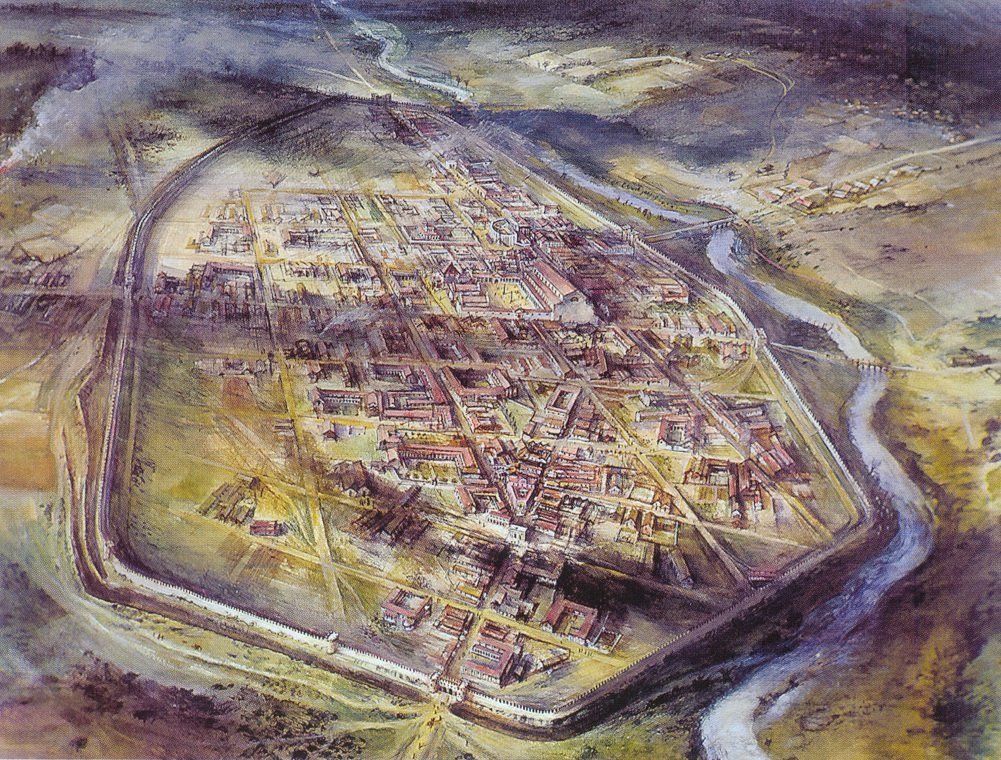The Lost Kingdom
The Survival of a Post-Roman Enclave in Hertfordshire until the Seventh Century
© 2024 Geoffrey M. Hodgson
Is it possible that a post-Roman kingdom, about which we know very little and have no substantial written record, survived in England for about 200 years after Britain was cut loose from the disintegrating Western Roman Empire in 410? It is suggested in this essay that a kingdom, centred in Verulamium (St Albans) in Hertfordshire, could have existed from the end of Imperial Roman rule in Britain in 410 until around the year 616.
This idea of post-Roman survival goes against the popular perception of British history. We all like neat, tidy segmentations of time and space. So we are led to believe that Romans ‘left’ Britain in 410, followed by centuries of Anglo-Saxon rule. In this conception, the divisions and boundaries are clear. After 410, it is believed, the Roman period ended.
But in fact, there were several post-Roman enclaves in England that resisted the Anglo-Saxons and survived until the seventh century or even later. The Lost Kingdom tells the story of one of these post-Roman survivals.
Britain's first Brexit
The break from Rome in 410 was Britain’s first Brexit. The 2020 departure from the European Union has also raised questions about the British identity and Britain’s place in Europe. The truth is that Britain does not have a singular identity and it has interacted with the Continent, through trade and migration, for many millennia, even before the Romans arrived.
Notions of 'Englishness' are often based on a false view of an unalloyed Anglo-Saxon people. Neither DNA nor historical evidence support this account. The English, like the British as a whole, are a mongrel race, combining the blood and cultures of successive settlers and invaders.
This essay (free download here) tells this story.
The riddle of the Cambridgeshire dykes
Four great dykes cross the ancient Icknield Way between Royston and Newmarket. These dykes are, from east to west, the Devil’s Dyke, Fleam Dyke, Brent Ditch and Bran (or Heydon) Ditch. The largest and most impressive is the Devil's Dyke, pictured above.
For a long time, many people thought that they were all Iron Age earthworks. But excavations of the Fleam and Devil’s Dykes, in 1923 and 1973 respectively, found Roman material within them, thereby refuting a pre-Roman date. There is another view that the Cambridgeshire dykes had been built to defend and mark the boundary between the Anglo-Saxon kingdoms of Mercia and East Anglia. This is still endorsed by some authorities.
The explanation based on conflict between Mercia and East Anglia is difficult to reconcile with the size and placement of the dykes themselves. They would have taken huge amounts of labour. In reality, Mercia and East Anglia were only briefly antagonists and often allies. Furthermore, the placement of the dykes does not tally with a threat from Mercia to the northwest. If the dykes were built to protect East Anglia from Mercia, then they were put in the wrong place!
In 1997 the archealogist Tim Malim and his team reported carbon dating tests on material taken from the Fleam Dyke. This showed conclusively that the Fleam Dyke was built in the fifth century and renewed in the sixth. The other dykes could also have been built at about this time.
What was their purpose? Malim and several others have argued that these dykes were massive defensive measures against post-Roman forces based in and around what is now Hertfordshire. This evidence is reviewed in this essay.


